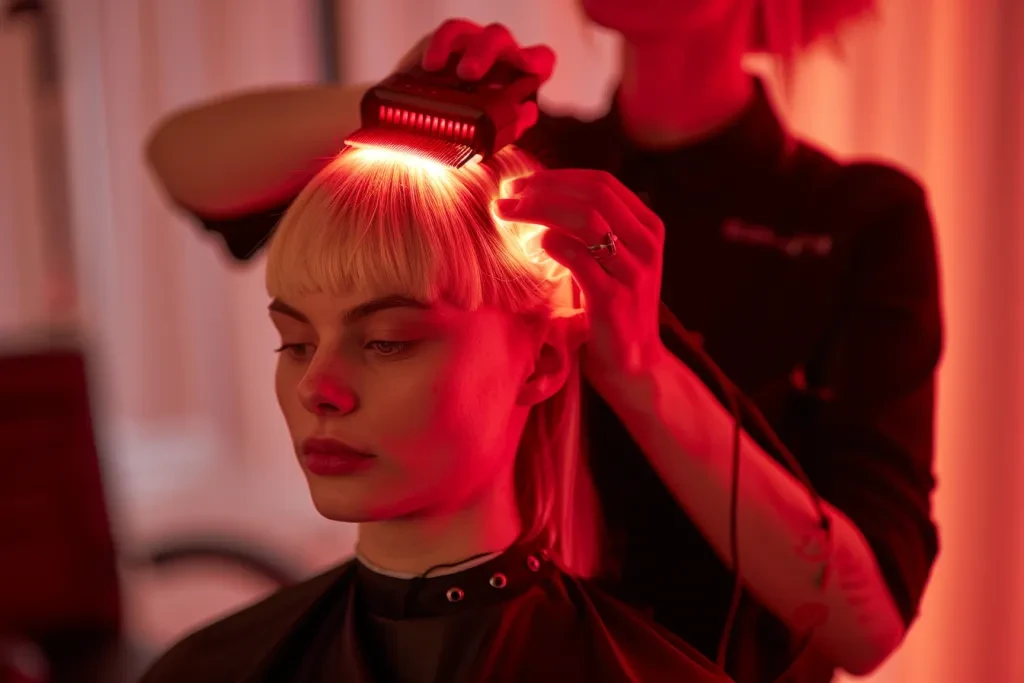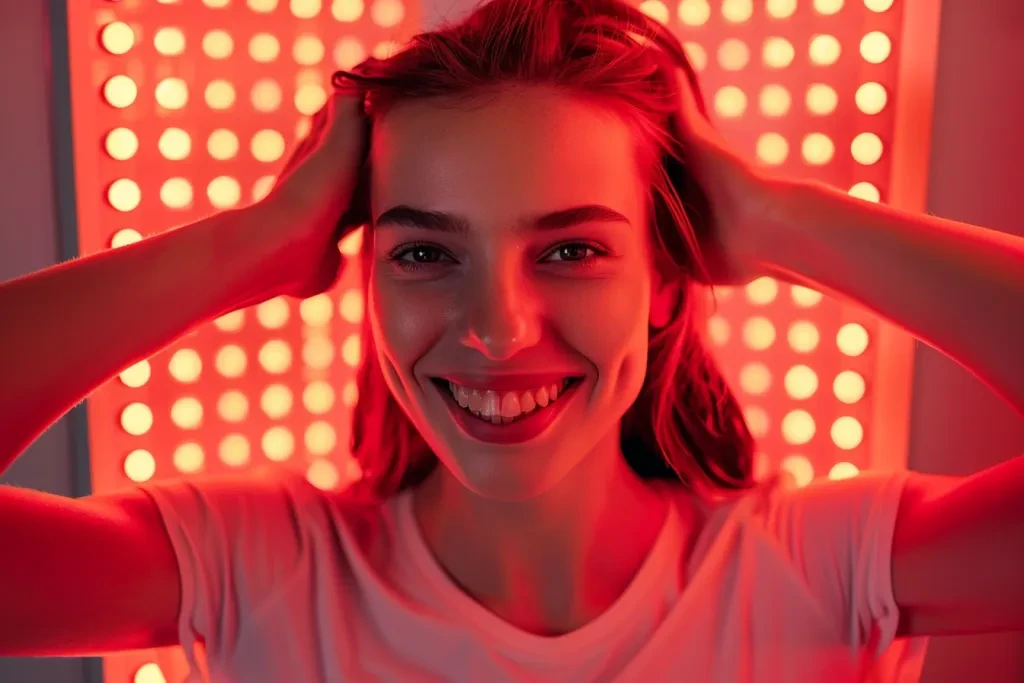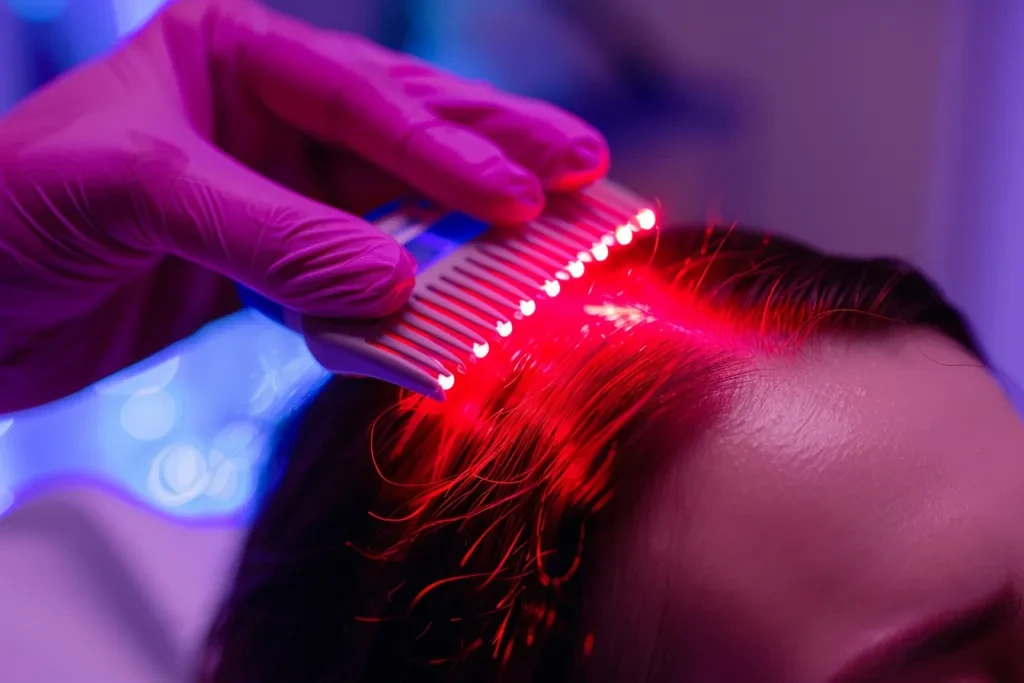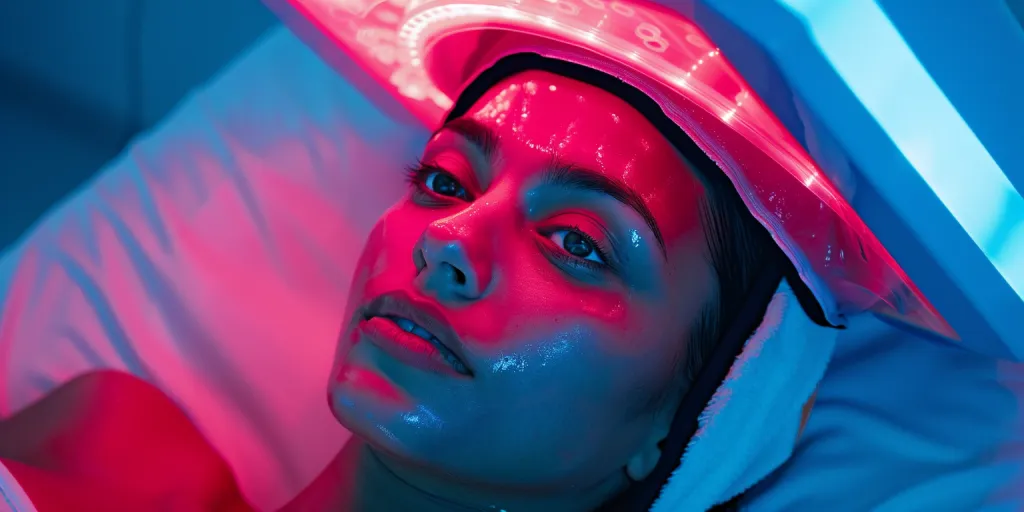In the quest for fuller, healthier hair, red light therapy emerges as a beacon of hope. This innovative treatment, grounded in science, offers a non-invasive solution to hair loss and thinning concerns. As we explore the efficacy of red light therapy for hair growth, we’ll uncover the principles behind its success, the tangible benefits it offers, and how to incorporate it into your personal care routine. Join us as we delve into the details that make red light therapy a sought-after solution for those looking to enhance their hair’s natural vitality.
Table of Contents:
– What is red light therapy and how does it work for hair growth?
– The scientific evidence supporting red light therapy for hair
– Practical tips for incorporating red light therapy into your routine
– Potential side effects and considerations
– Frequently asked questions about red light therapy hair growth
What is red light therapy and how does it work for hair growth?

Red light therapy, also known as low-level laser therapy (LLLT), utilizes specific wavelengths of light to stimulate cellular activity. When applied to the scalp, this therapy penetrates the skin to reach the hair follicles. It’s here that the magic happens—red light energy is absorbed by the cells, encouraging increased circulation and nutrient delivery to the hair follicles. This process, known as photobiomodulation, fosters a conducive environment for hair growth, revitalizing dormant follicles and promoting thicker, healthier hair strands.
Understanding the mechanism behind red light therapy is crucial. By emitting light at wavelengths typically ranging from 630 to 670 nanometers, the therapy directly targets the mitochondria within cells. This stimulation enhances cellular energy production, which is essential for supporting healthy hair growth cycles. The therapy’s ability to reduce inflammation and increase blood flow to the scalp further contributes to its effectiveness in combating hair loss.
The beauty of red light therapy lies in its simplicity and safety. As a non-invasive treatment, it offers a pain-free alternative to more aggressive hair loss interventions. With sessions that can be conveniently incorporated into your daily routine, red light therapy represents a commitment to long-term hair health, rather than a quick fix.
The scientific evidence supporting red light therapy for hair

Skepticism is natural when exploring new treatments, but red light therapy’s efficacy is backed by a growing body of scientific research. Numerous studies have demonstrated its positive effects on hair growth, with participants experiencing significant increases in hair density and strength. These findings are encouraging for anyone considering red light therapy as part of their hair care regimen.
One of the key studies in the field showed that individuals undergoing red light therapy treatment for a period of several months observed not only increased hair growth but also a decrease in hair shedding. This dual action of promoting growth while preventing loss is part of what makes red light therapy an appealing option for those facing hair thinning or baldness.
Moreover, the research highlights the importance of consistency and correct usage when it comes to red light therapy. The benefits of the treatment are most pronounced when it is applied regularly, following the recommended guidelines for duration and frequency. This adherence to protocol ensures that the scalp receives the optimal level of stimulation, maximizing the potential for hair regrowth.
Practical tips for incorporating red light therapy into your routine

Integrating red light therapy into your hair care routine doesn’t have to be complicated. Start by identifying a treatment plan that fits your schedule and hair growth goals. Whether you opt for at-home devices or professional sessions, consistency is key to seeing results. Aim for treatments several times a week, gradually increasing frequency as your scalp adjusts to the therapy.
When selecting a red light therapy device, look for one that specifies its wavelength range, ensuring it falls within the effective spectrum for hair growth. Pay attention to device reviews and safety certifications to choose a high-quality option that promises durability and efficacy.
Combining red light therapy with other hair care practices can amplify its benefits. Consider incorporating scalp massages, which can further increase blood flow, and using hair products that support hair health. By adopting a holistic approach, you’re not only addressing hair growth at the cellular level but also nurturing your hair externally.
Potential side effects and considerations

While red light therapy is celebrated for its safety and lack of severe side effects, it’s important to approach any treatment with awareness. Mild scalp redness and warmth are common immediately after sessions but typically subside quickly. Individuals with certain medical conditions or those taking medications that increase light sensitivity should consult with a healthcare provider before beginning treatment.
It’s also crucial to set realistic expectations. Red light therapy can significantly improve hair growth and thickness, but results vary from person to person. Factors such as the underlying cause of hair loss and individual response to the therapy play a role in its effectiveness. Patience and persistence are essential, as improvements are often gradual and cumulative.
Frequently asked questions about red light therapy hair growth

To further demystify red light therapy for hair growth, let’s address some common inquiries:
- How long does it take to see results from red light therapy?
- Can red light therapy reverse baldness?
- Is red light therapy suitable for all hair types and conditions?
These questions underscore the importance of understanding red light therapy’s capabilities and limitations. While it offers a promising solution for many, it’s not a one-size-fits-all remedy. Engaging with these FAQs empowers users to make informed decisions about their hair care strategies.
Conclusion:
Red light therapy stands out as a compelling, science-backed option for those seeking to enhance their hair growth naturally. By understanding how it works, recognizing its evidence-based benefits, and incorporating it thoughtfully into your routine, you can harness its potential to achieve healthier, fuller hair. As with any treatment, being informed and realistic about expectations ensures a positive and rewarding experience. Embrace the journey toward revitalized hair with patience, and let red light therapy illuminate the path to improved hair health.




